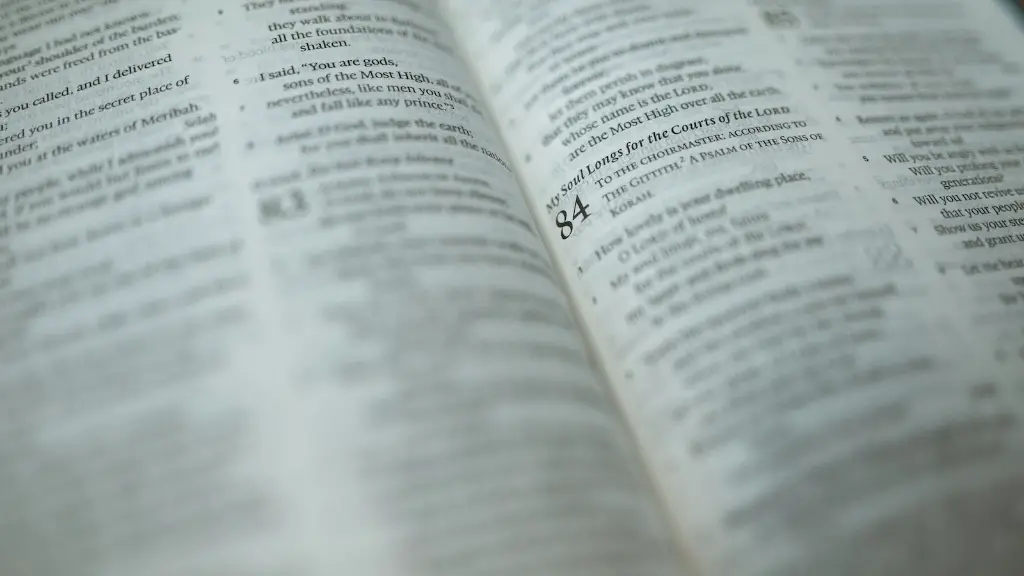Learning how to in text cite the Bible is an important academic skill, particularly for those writing essays or studying theology. Citing the Bible correctly not only indicates that you have conducted research but also implies that you have respect for the source material. In text citing can be intimidating as the book of the Bible and chapter reference can be complex, but it is essential to ensure the accuracy of the information you are presenting in your essay or paper. This article will provide a step-by-step guide to correctly in text citing the Bible in accordance with academic conventions.
What Is an In Text Citation
An in text citation is a reference placed within the text of an academic paper or essay to signify relevant outside sources. It is often used to cite books and other sources of information, such as the Bible. In text citations do not always include page numbers but will typically include the book name and chapter or verse number. This brief form of referencing allows the reader to see where the information is sourced from without interrupting the flow of your text.
Using MLA Style for In Text Citing
The Modern Language Association (MLA) format is one of the most common styles for citing the Bible. It is typically used for humanities papers. In MLA style, you need to include the book, chapter and verse number, as well as the translation. For example, if you are citing a verse from the King James Bible, the in text citation might look like this: (Bible, KJV, Genesis 1.1). The full version of this would be (Bible, King James Version, Genesis 1.1) and should be included in your bibliography. If another version of the Bible is being used, such as the English Standard Version (ESV), the same format should be used, but with the appropriate version name specified (Bible, ESV, Genesis 1.1).
Using APA Style for In Text Citing
The American Psychological Association (APA) style is another popular style which is commonly used to cite the Bible. It is typically used in scientific and health-related studies as well as social sciences. In APA citation style, you will also need to include the book, chapter and verse of the Bible as well as the translation. This format is slightly different from MLA as the translation is included in brackets after the verse reference. For example, if you are citing a verse in the English Standard Version of the Bible, the in text citation would look like this: (Genesis 1.1, ESV). The full version of this would be (Genesis 1.1, English Standard Version) and should be included in the bibliography.
When To Use an In Text Citation
In text citations for the Bible should be used any time someone wants to use a verse or other form of scripture in an academic paper. It is important to provide the exact source of these references so that your reader can find and evaluate the information too. In text citations are not only a courtesy but also a necessity to protect against plagiarism, as failure to correctly cite information is considered academic fraud. In text citations should also be used when referring to commentaries, essay collections and other important works related to the careful reading and interpretation of Biblical material.
When Not To Use In Text Citation
In text citations are not necessary when summarizing or making a general reference to Biblical events, characters or themes. For example, citing Genesis 1.1 as the beginning of Creation or Jesus’ Sermon on the Mount does not require in text citing. However, if you are making an academic or scientific point that requires referencing a specific scripture, this must be cited. Similarly, all quotes within an essay will require in text citing. Any time you use a scientific or scholarly resource beyond the Bible to support a point, this must also be in text cited.
How To Integrate In Text Citations Into Your Paper
Whenever you are using or referring to a scripture in your paper or essay, ensure that you provide an in text citation. These should be integrated seamlessly into the text, generally at the end of the sentence or paragraph in which the information is mentioned. All Bible references should be linked to a full and accurate bibliography at the end of the paper. When preparing an academic paper, it is important to be organized and consistent, so make sure that all citations are accurate and formatted correctly.
Examples Of In Text Citing the Bible
Jesus’ love is central to our faith, as stated in Matthew 5.44 (Bible, KJV): ‘But I say unto you, Love your enemies, bless them that curse you, do good to them that hate you, and pray for them which despitefully use you, and persecute you.’
In John 14.27 (Bible, ESV), Jesus tells his disciples that ‘Peace I leave with you; my peace I give to you. Not as the world gives do I give to you. Let not your hearts be troubled, neither let them be afraid.’
Conclusion
Knowing how to in text cite the Bible correctly is an essential academic skill. Whether you are using MLA or APA style, make sure to cite your Biblical sources accurately and properly. Pay attention to the Bible references in your text and make sure that they are linked back to the full source in your bibliography. With this guide in hand, you should be well equipped to cite the Bible correctly and confidently.


